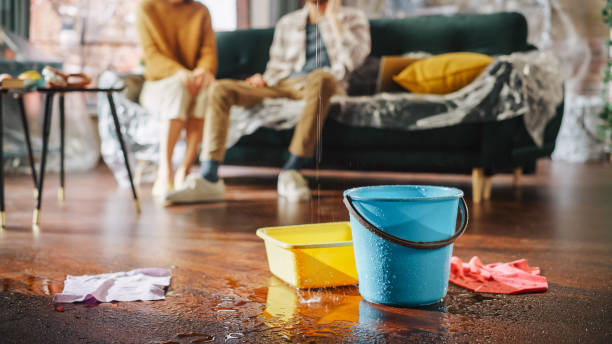What to Know About Roof Damage

Your roof protects your home from bad weather, such as heat, snow, and storms. The roof shields your house from the bad weather. Your roof is exposed, which makes it more vulnerable to damage and issues.
It is best to replace your roof with a more durable and reliable material when it no longer serves its intended purpose. Roofers can replace your roof.
You must prevent roof damage and maintain it in good shape. Damaged roofs can cause serious problems for homeowners.
Knowledge of the types of roof damage will help you prevent any future roof damage to your home. This list can help you learn more about it.
Loose And Broken Shingles
Roof shingles are often loose or damaged by strong winds and hail. Sealing the shingles with roof sealant will prevent them from becoming loose or broken.
It is best to replace your roof and roof shingles if they have been in place for many years. How to fix a broken or loose shingle
- Remove the tabs that cover your nails.
- Pull out the nails with a prybar. Slide the bar under the damaged shingle.
- Remove the damaged shingles using your tools.
- Seal any cracks using roofing cement.
- Install the new shingle, and use nails to seal it on all sides.
Repairing Roof Shingles That Are Damaged or Loose
There are several reasons why you may need to replace or repair your roof shingles.
- Loose or damaged shingles can cause water leaks
- It can reduce the value of your home
- Increase your utility bills
- pests get inside your home
- Roof debris piling up
Cracks and Holes
The roof protects your home. Roof cracks and roof holes are more common on flat roofs, but they can still occur with other roof styles. A variety of factors cause roof cracks and holes.
- Extreme weather conditions
- People walking on your roof
- Roofs that are not properly installed
- Pecking birds, other animals, and insects
How do you fix roof cracks and holes?
This is an easy step-by-step guide on how to fix roof holes and cracks:
- Find the roof holes and cracks by climbing to your roof.
- Apply roofing mastic to the cracks or holes on the roof to begin the repair.
- After the roofing mastic has dried, add reinforcement webbing.
- Dry the webbing by squeezing it.
- Second coat of roofing mastic.
Roof Shingles curling
Roof shingle curling is a roof problem that every homeowner should be aware of. A roof curling occurs when your roof edges are curved. It is best to replace a curling shingle with a brand-new one.
Your shingles may curl for a variety of reasons, including:
- Your roof’s age is a factor to consider
- The improper lining of shingles
- Installation of shingles can be problematic
- Roof layers stacked multiple times
- moisture
Roof Aging
Regular roofing can last up to 20 years, depending on the type of roof and its material. An old roof can be dangerous for the following reasons.
- Leakage of water in the house
- Poor roof ventilation can be caused by a number of factors
- Roof mold and deterioration
- Buildups of ice or debris on your roof
- What causes paint to peel and fade in your home?
- Damage to the ceiling and walls of your home
- Higher utility bills
Roof Types and How long they last
You should be aware of the types of roofs available and their lifespan to choose the right roof for your home. Here’s a list of roof types and their lifespans.
Metal Roof
Metal roofs are made from metals such as zinc and copper. Metal roofs are a durable roofing material that can last from 40 to 70 years. Metal roofs come in different types, including:
- Ribbed metal panels
- Stand-seam metal roofing
- Stone-coated Steel
Asphalt Shingles
Asphalt shingles are made from asphalt sealant, fiberglass, and fiberglass. Asphalt shingles are relatively less expensive than metal roofing. It is durable, can withstand rain, snow, and UV rays, and can resist wind.
Asphalt shingles can last between 15 and 30 years. Asphalt shingles come in different types, such as:
- Premium shingles
- Three-tab shingles
- Dimensional shingles
Clay Tile Roof
Clay tile roofs are highly durable, lasting between 50 and 100 years. Clay tile roofs work best in tropical climates but will not last as long in colder climates.
Wood Shingles
Wood shingles can last up to 30 years. The material can catch fire, so it is important to maintain and paint the wooden shingles regularly.
Roof Flashing Missing or Damaged
Leaks can form in your roof system if you have a damaged or missing flashing. A number of factors can cause roof flashing damage.
- Poor installation of roof flashing
- Normal wear and tear
- improper materials used
How do you know if a roof flashing is missing or damaged?
You can tell if a roof flashing is missing or damaged by:
- Roof system rust
- Holes and Dents
- Bends and Cracks
- Roof flashing missing parts
- Leaks inside your home
- Roof shingles damaged
- Molds and stains
Pooling water
Water accumulation on your roof can cause damage. Your roof may be prone to water accumulation for a variety of reasons.
- failing drainage system
- Roof design issues
- high liquid volume
- Flat Roofing
How to Fix Pooling Water?
You can do several things to fix the problem of pooling water on your roof.
- Fixing the uneven and low roof surfaces
- Flushing the drains
- Addition of drain lines
- Installing roof crickets
- Roof membranes can be replaced.
- Compressed insulation
Sagging Spots
A sagging area can also cause roof damage. Roofs that show sags or dips in the line will require immediate repairs.
Broken trusses and rafters usually cause roof sagging.
How To Fix A Sagging Spot?
This is how to fix a sagging area in your roof.
- The roof will sag if you inspect it.
- Drill holes into the steel “L” channel on your roof to repair the rafter, truss, or beam.
- Remove any wood fragments or debris from the truss and rafter
- Install the steel “L” channel using lag screws
- Measure the gap between the “L” channel and the rafter, truss, or beam.
- To tighten steel and rafters or trusses, add two lag screws.
Roof Leaks
Leaks in your roof are disturbing and need to be repaired. Roof leaks can be caused by a variety of factors, including:
- Nails coming out of shingles
- Pipe boot leaks
- gutter debris
- Roof flashings that are cracked or damaged
- Ageing chimneys
- Gas vent collars fail
- Skylights installed incorrectly




